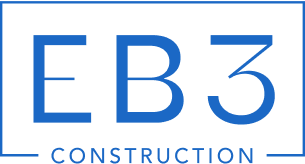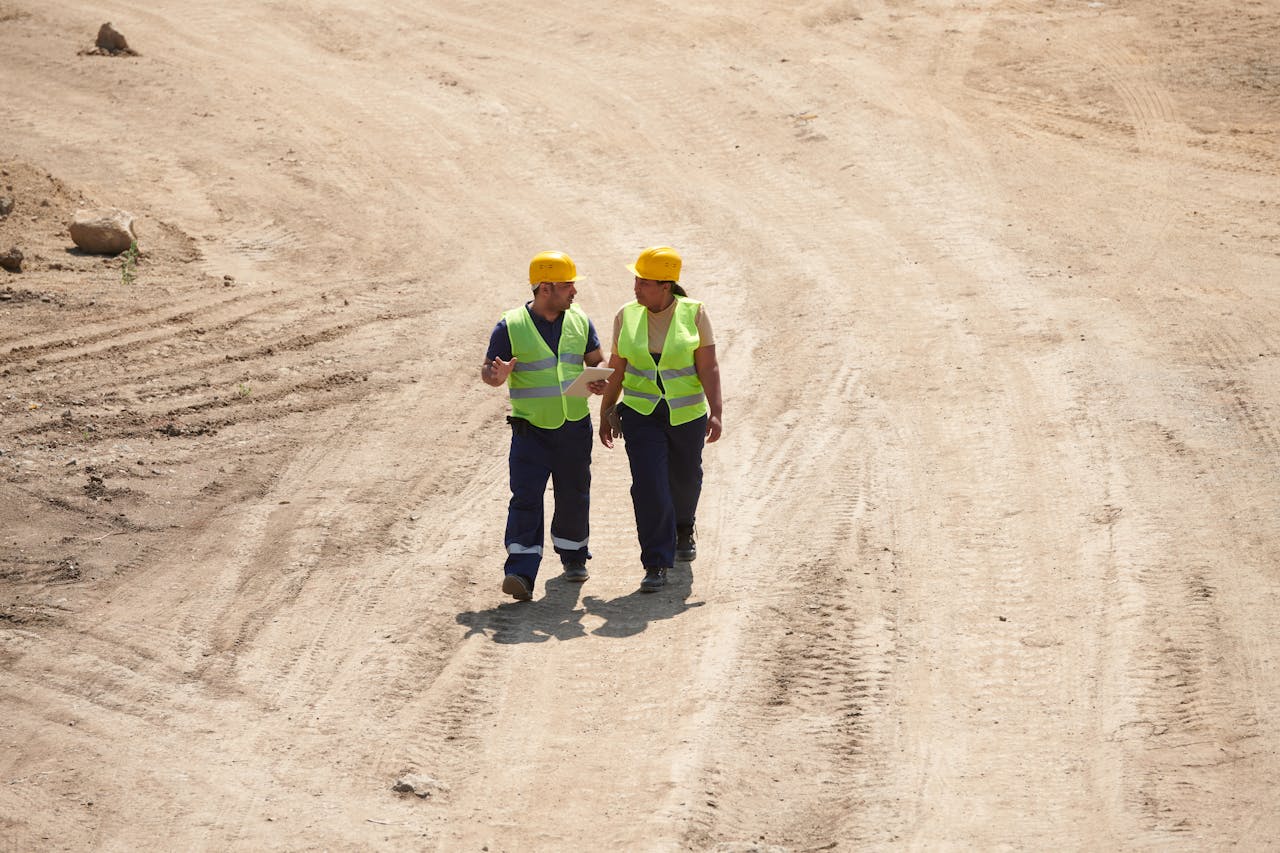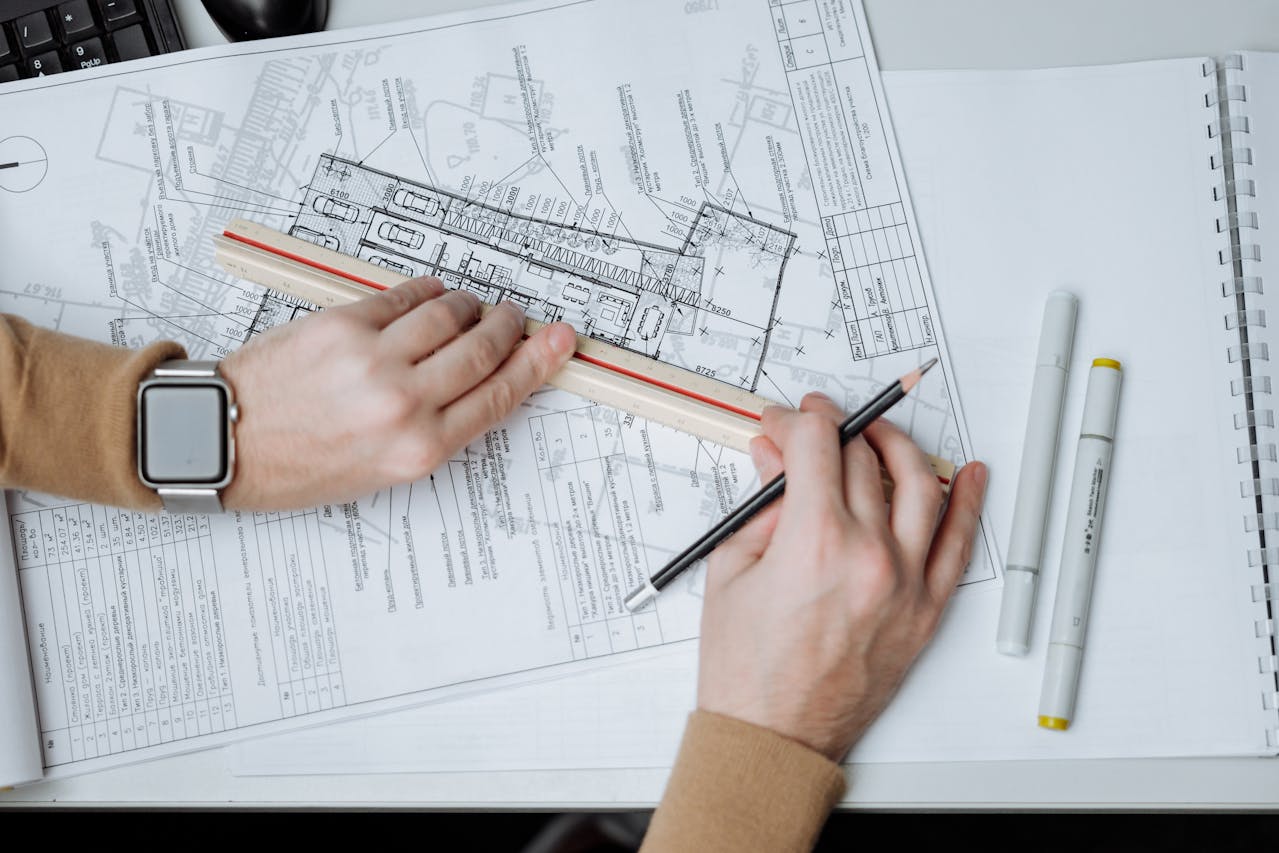Most c-store projects fail before construction begins. Site selection drives customer flow. Poor architectural design creates operational bottlenecks.
A convenience store construction contractor coordinates every phase from concept to grand opening. We handle site evaluation, feasibility studies, architectural design, and construction management. The work includes equipment integration for fuel pumps, POS systems, refrigeration units, and security systems to deliver functional retail spaces that generate revenue from day one.
How To Manage A C-Store Project Lifecycle
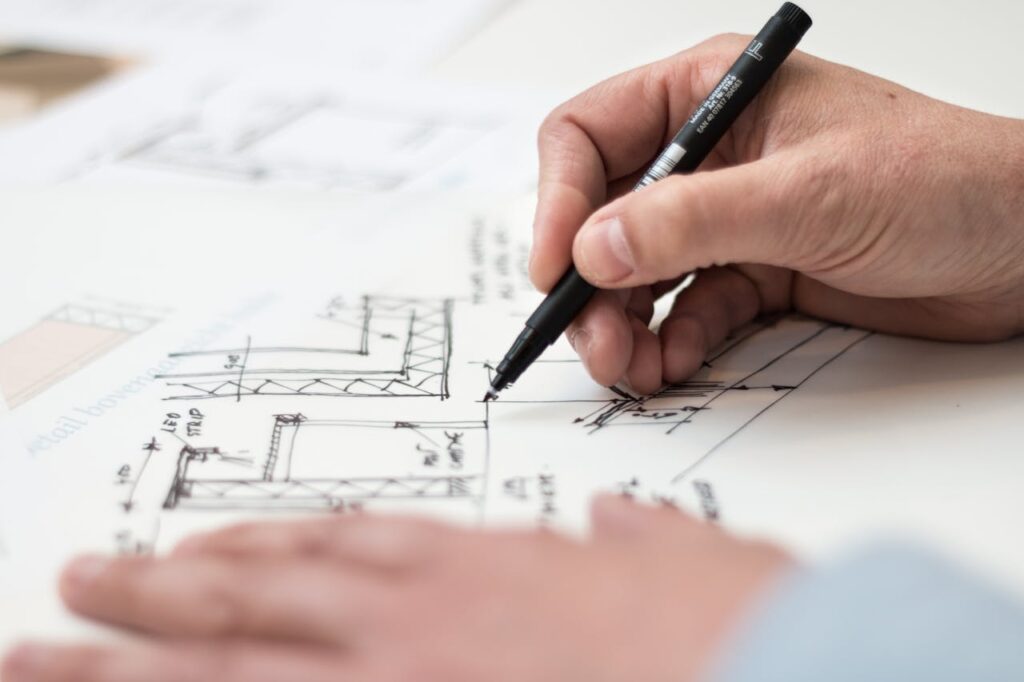
We start every c-store project with systematic site selection that evaluates location viability against market demographics and traffic patterns. Our feasibility study validates whether the proposed site can support projected revenues while meeting zoning requirements and local regulations. This early validation prevents costly surprises later in the project timeline.
Site selection involves analyzing multiple factors including accessibility, visibility, and proximity to competitors. We evaluate utility access, soil conditions, and environmental considerations that affect construction costs. The feasibility study combines market analysis with preliminary cost estimates to confirm the project makes financial sense before significant resources are committed.
Preliminary Design And Visualization
Our preliminary design phase creates the foundational documents that guide construction decisions. The site plan establishes building placement, parking layouts, fuel island positions, and traffic flow patterns that optimize customer access. We develop conceptual building design that reflects brand standards while accommodating operational requirements for convenience store functions.
Floor plan development focuses on maximizing retail space efficiency and creating logical customer movement patterns. Our equipment plan identifies locations for refrigeration units, POS systems, and food service equipment that support daily operations. We integrate these elements into comprehensive drawings that serve as the blueprint for detailed design development.
3D modeling provides visual previews that help owners understand how the finished store will look and function. These models reveal potential design conflicts early when changes remain cost-effective. Owners can evaluate different layout options and make informed decisions about space allocation, fixture placement, and equipment integration before construction begins.
Budget Estimating And Cost Control
Budget estimating aligns project scope with available funding to establish realistic cost expectations. We develop detailed cost breakdowns that account for site preparation, building construction, equipment installation, and permit fees. Our estimates include material costs, labor rates, and subcontractor pricing based on current market conditions.
Architectural design follows budget approval and translates preliminary concepts into detailed construction documents. We specify finishes, systems, and equipment that meet both functional requirements and budget constraints. Value engineering reviews identify opportunities to optimize costs without compromising quality or operational efficiency.
Cost control continues throughout design development as we track changes and their financial impact. Regular budget reviews ensure the project remains within approved parameters while accommodating necessary modifications. This systematic approach prevents cost overruns that can jeopardize project completion or force unwanted compromises.
Construction Management And Execution
During construction, we handle comprehensive scheduling that coordinates all trades and activities from ground break to final inspections. Our construction management approach sequences work to minimize delays while maintaining quality standards. We coordinate utility connections, structural work, and interior installations according to critical path methodology.
Subcontractor management ensures all specialized trades complete their work on schedule and to specification. We oversee electrical installations for lighting and POS systems, plumbing for restrooms and food service areas, and HVAC systems that maintain customer comfort. Our team coordinates with fuel system installers, refrigeration technicians, and security system providers to integrate all operational equipment.
Equipment installation represents the final phase where operational systems come online. We manage the installation of fuel dispensers, underground storage tanks, refrigeration cases, and point-of-sale terminals. Our coordination ensures all systems integrate properly and receive necessary inspections before the store opens for business.
What Design And Equipment Choices Shape Customer Experience And Operations?
Customer movement patterns define successful convenience store layouts. We design traffic flow to guide shoppers naturally from entrance to checkout while maintaining clear sightlines for both security and customer comfort. Wide aisles accommodate peak hours when multiple customers browse simultaneously. Strategic product placement creates logical pathways that expose customers to impulse purchases without feeling forced.
Modern c-store layouts incorporate diverse service areas that extend beyond traditional convenience retail. Seating areas encourage customers to consume prepared foods on-site, increasing average transaction values. Coffee shops create morning destination traffic and establish regular customer patterns. These spaces require careful integration with HVAC systems and adequate electrical capacity for commercial equipment.
Core Equipment And Infrastructure Planning
Walk-in coolers anchor the beverage section and require precise sizing based on projected sales volume. We position these units for efficient restocking while ensuring customer access remains unobstructed. Beer caves serve as destination areas that draw foot traffic through the store, typically positioned toward the rear to maximize exposure to other merchandise.
Commercial kitchens support fresh food programs that differentiate stores from basic fuel stops. Kitchen design requires specialized ventilation, fire suppression, and food safety compliance. POS systems integrate with inventory management and fuel dispensers, requiring careful coordination of data lines and payment processing infrastructure. Equipment integration connects pumps, meters, and point-of-sale terminals into unified operational systems.
Specialized Services And Amenities
EV charging stations represent growing infrastructure demands that require significant electrical upgrades and site planning considerations. We coordinate utility connections and ADA-compliant pathways to charging areas. Drive-thru windows add operational complexity but capture time-pressed customers, requiring dedicated ordering systems and modified building layouts.
Trucker lounges, shower facilities, and pet wash stations expand service offerings for highway locations. These amenities require additional plumbing, drainage, and ventilation systems. Carwash bays integrate with existing building systems while requiring specialized water reclamation and chemical storage areas. Each addition demands careful cost-benefit analysis against projected revenue increases.
Code Compliance And Security Integration
ADA compliance governs aisle widths, counter heights, and accessible restroom facilities. We ensure all service areas meet federal accessibility standards from initial design through final inspection. Building codes dictate fire safety systems, emergency egress routes, and occupancy limits that influence overall layout decisions.
Security systems coordinate camera placement with lighting design and cash handling protocols. Branding elements integrate with operational requirements without compromising safety or accessibility standards. We balance aesthetic goals with functional necessities to create spaces that serve both business objectives and customer expectations.
Remodel Or Refresh: Which Path Fits Your Store And Budget?
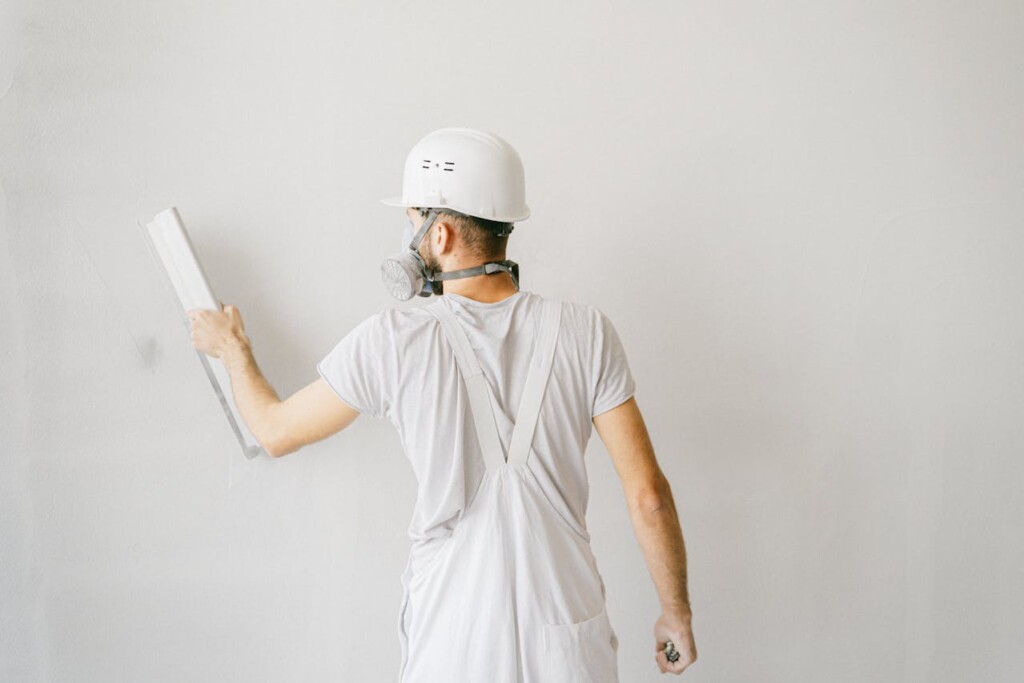
Store owners face a critical decision when updating their convenience store: pursue a comprehensive remodel or opt for a targeted refresh. The choice impacts timeline, budget, and operational disruption significantly.
Understanding Store Refresh Scope
A store refresh focuses on cosmetic updates that immediately enhance customer experience. We update gondola shelving, replace checkout counters, and modernize beverage stations without touching structural elements. Wall finishes receive fresh paint or new materials while flooring gets upgraded to current standards.
Décor graphics play a vital role in refresh projects. New signage, updated branding elements, and contemporary displays create a fresh appearance that customers notice immediately. These changes typically avoid permitting requirements, which accelerates project timelines considerably.
Full Remodel Construction Requirements
A full remodel involves structural changes that transform store functionality. We may relocate or remove walls to improve traffic flow and create better sightlines. Electrical changes support new equipment placement and enhanced lighting systems while plumbing changes accommodate different fixture locations or upgraded facilities.
These modifications require architectural plans, engineering reviews, and permit approvals from local authorities. Building inspections occur at multiple stages, adding time but ensuring code compliance. NACS data indicates average remodel costs reach approximately $409,582, reflecting the complexity and scope involved.
Phased Construction Strategies
We coordinate phased construction to minimize business interruption during updates. Overnight work schedules allow stores to operate normally during peak hours while construction proceeds during low-traffic periods. This approach proves particularly effective for refresh projects.
Some refresh projects complete within 7-10 days depending on scope and complexity. Full remodels require longer timelines but benefit from strategic phasing that maintains customer access to essential services. We sequence work to prioritize revenue-generating areas while completing necessary infrastructure updates.
Material sourcing coordination begins early in project planning. Fixtures, counters, and graphics require lead time for manufacturing and delivery. We establish delivery schedules that align with construction phases, preventing delays and ensuring smooth workflow throughout the project duration.
How Does EB3 Construction Keep Quality, Safety, And Compliance On Track?
We structure our convenience store projects around three critical management areas that determine project success. Quality control begins with detailed planning that establishes clear specifications for materials, workmanship, and performance standards before ground breaks. Safety protocols start with comprehensive training programs and continue with consistent site controls throughout construction. Compliance management addresses building codes, ADA requirements, and permitting through systematic documentation and inspection coordination.
Quality Control Through Detailed Planning And Performance Tracking
We establish quality benchmarks during the preconstruction phase by developing detailed specifications for all materials and installation methods. These specifications align with your operational requirements while meeting industry standards for convenience store construction. Performance tracking tools monitor work progress against established quality metrics at regular intervals throughout the build.
Our quality management system includes regular inspections at critical construction milestones. We verify material compliance before installation, check workmanship during construction phases, and conduct comprehensive testing of all systems before handover. Documented quality control procedures create accountability and ensure consistent results across all project phases.
Cost projections integrate quality requirements into budget planning from the start. We avoid value engineering decisions that compromise long-term performance, instead focusing on materials and methods that deliver durability and operational efficiency. This approach prevents costly rework and maintains your project timeline while delivering the quality standards your c-store operations demand.
Safety Through Training And Site Controls
We maintain safety as the foundation of all construction operations through comprehensive training programs that begin during worker orientation. Safety training addresses site-specific hazards relevant to convenience store construction, including electrical work around fuel systems, confined space entry, and chemical handling for equipment installation. Regular toolbox talks reinforce proper safety protocols as work conditions change throughout the project.
Site controls include proper personal protective equipment distribution, equipment inspection protocols, and clear safety procedures for high-risk activities. We implement systematic safety inspections to verify compliance with OSHA standards and maintain consistent safety performance across all work areas. Documentation of safety training and incident reporting creates the accountability structure needed to maintain safe work environments.
Emergency response procedures prepare teams for potential incidents while establishing clear communication protocols with local authorities. We coordinate with fire departments and emergency services to ensure they understand site conditions and access routes. This preparation supports rapid response when incidents occur and demonstrates our commitment to worker safety throughout the construction process.
Compliance Management For Building Codes, ADA, And Permitting
We ensure adherence to building codes through systematic permit management and inspection coordination. Compliance extends beyond basic safety regulations to include health department requirements, fire marshal specifications, and local zoning standards that govern convenience store operations. Early coordination with regulatory authorities prevents compliance issues that could delay project completion.
ADA compliance planning integrates accessibility requirements into design and construction from day one rather than retrofitting later. We verify that customer access routes, restroom facilities, and service counter heights meet current accessibility standards. This proactive approach prevents costly modifications and ensures your store welcomes all customers from opening day.
Regular compliance audits verify that construction practices meet all applicable standards while identifying potential issues before they affect project progress. We maintain current documentation of all permits, approvals, and inspection results to support regulatory compliance throughout the construction process. This systematic approach prevents compliance gaps that could result in work stoppages or delayed occupancy permits.
Transparent Communication And Schedule Control
We establish clear communication routines that connect field operations with project stakeholders through regular progress updates and documented decision-making processes. Weekly progress meetings address current work status, upcoming milestones, and any issues requiring immediate attention. Digital project management tools provide real-time visibility into construction progress and maintain accountability across all team members.
Schedule control involves proactive monitoring of critical path activities and resource coordination to prevent delays. We track subcontractor performance against established timelines while maintaining flexibility to address unexpected conditions or design changes. This balanced approach keeps projects moving forward while ensuring quality standards remain intact.
Budget control integrates cost tracking with schedule management to maintain financial performance throughout construction. We provide regular budget updates that compare actual costs against projections while identifying potential cost impacts from scope changes or unforeseen conditions. Transparent reporting enables informed decision-making that protects your investment while maintaining project momentum toward your target opening date.
Conclusion And Next Steps
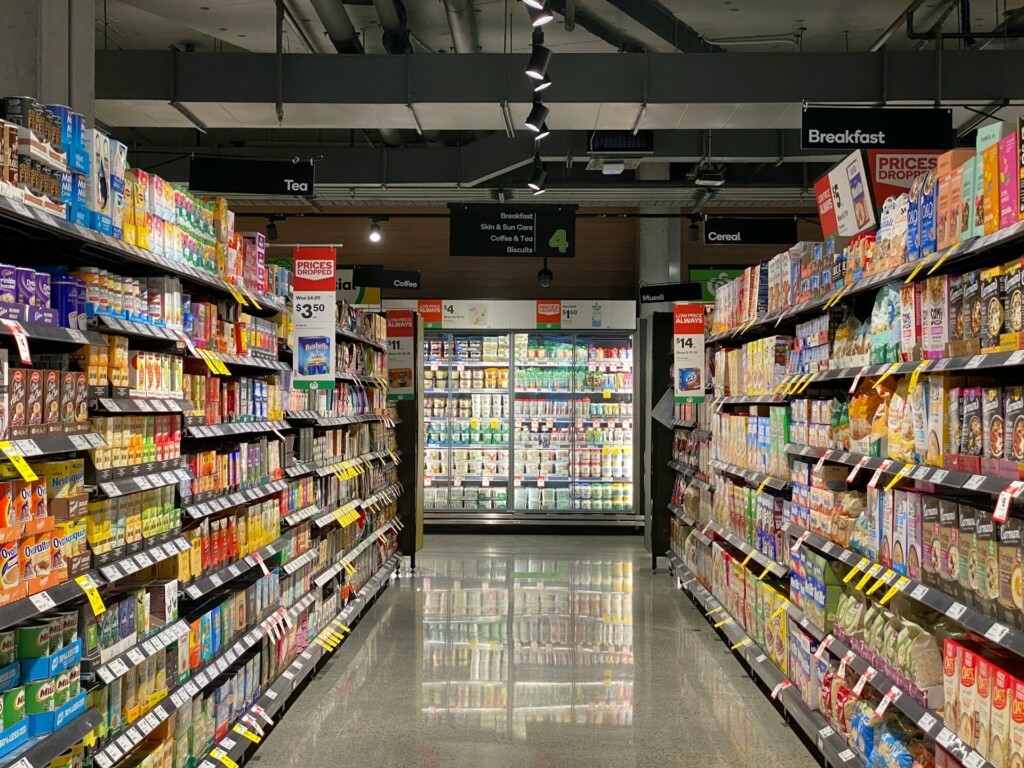
A convenience store construction contractor brings the expertise needed to transform your vision into a functioning retail operation. From initial site evaluation through final inspections, we coordinate every aspect of the construction process to deliver results that meet your operational goals and budget requirements.
Your success depends on making informed decisions early in the planning phase. Site validation establishes the foundation for customer accessibility and traffic patterns. Feasibility studies confirm market demand and operational viability. Strategic equipment planning ensures your systems support both current needs and future growth. The choice between a cosmetic refresh and full remodel should align with your timeline and investment capacity. Clear communication protocols keep all stakeholders informed and the project schedule moving forward efficiently.
Contact EB3 Construction to discuss your convenience store project and establish a development plan that fits your specific requirements.
